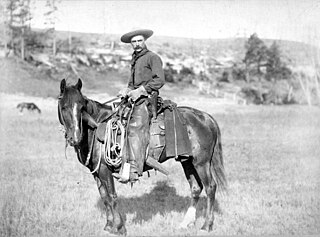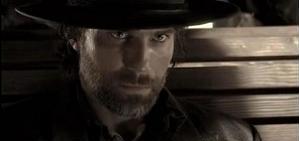
America's first transcontinental railroad was a 1,911-mile (3,075 km) continuous railroad line built between 1863 and 1869 that connected the existing eastern U.S. rail network at Council Bluffs, Iowa, with the Pacific coast at the Oakland Long Wharf on San Francisco Bay. The rail line was built by three private companies over public lands provided by extensive U.S. land grants. Building was financed by both state and U.S. government subsidy bonds as well as by company-issued mortgage bonds. The Western Pacific Railroad Company built 132 miles (212 km) of track from the road's western terminus at Alameda/Oakland to Sacramento, California. The Central Pacific Railroad Company of California (CPRR) constructed 690 miles (1,110 km) east from Sacramento to Promontory Summit, Utah Territory. The Union Pacific Railroad (UPRR) built 1,085 miles (1,746 km) from the road's eastern terminus at the Missouri River settlements of Council Bluffs and Omaha, Nebraska, westward to Promontory Summit.

The American frontier, also known as the Old West, popularly known as the Wild West, encompasses the geography, history, folklore, and culture associated with the forward wave of American expansion in mainland North America that began with European colonial settlements in the early 17th century and ended with the admission of the last few contiguous western territories as states in 1912. This era of massive migration and settlement was particularly encouraged by President Thomas Jefferson following the Louisiana Purchase, giving rise to the expansionist attitude known as "manifest destiny" and historians' "Frontier Thesis". The legends, historical events and folklore of the American frontier have embedded themselves into United States culture so much so that the Old West, and the Western genre of media specifically, has become one of the defining features of American national identity.


The Crédit Mobilier scandal was a two-part fraud conducted from 1864 to 1867 by the Union Pacific Railroad and the Crédit Mobilier of America construction company in the building of the eastern portion of the first transcontinental railroad. The story was broken by The New York Sun during the 1872 campaign of Ulysses S. Grant.

Fort Kearny was a historic outpost of the United States Army founded in 1848 in the western U.S. during the middle and late 19th century. The fort was named after Col. and later General Stephen Watts Kearny. The outpost was located along the Oregon Trail near Kearney, Nebraska. The town of Kearney took its name from the fort. The "e" was added to Kearny by postmen who consistently misspelled the town name. A portion of the original site is preserved as Fort Kearny State Historical Park by the Nebraska Game and Parks Commission.
The Kansas Pacific Railway (KP) was a historic railroad company that operated in the western United States in the late 19th century. It was a federally chartered railroad, backed with government land grants. At a time when the first transcontinental railroad was being constructed by the Central Pacific and the Union Pacific, it tried and failed to join the transcontinental ranks. It was originally the "Union Pacific, Eastern Division", although it was completely independent. The Pennsylvania Railroad, working with Missouri financiers, designed it as a feeder line to the transcontinental system. The owners lobbied heavily in Washington for money to build a railroad from Kansas City to Colorado, and then to California. It failed to get funding to go west of Colorado. It operated many of the first long-distance lines in the state of Kansas in the 1870s, extending the national railway network westward across that state and into Colorado. Its main line furnished a principal transportation route that opened up settlement of the central Great Plains, and its link from Kansas City to Denver provided the last link in the coast-to-coast railway network in 1870. The railroad was consolidated with the Union Pacific in 1880, and its mainline continues to be an integral part of the Union Pacific network today.
"Hell on Wheels" is a phrase that originally described the collection of business locations, such as gambling houses, which followed the builders of the First Transcontinental Railroad in the US, in the 1860s.

Thomas Clark Durant was an American physician, businessman, and financier. He was vice-president of the Union Pacific Railroad (UP) in 1869 when it met with the Central Pacific railroad at Promontory Summit in Utah Territory. He created the financial structure that led to the Crédit Mobilier scandal. He was interested in hotels in the Adirondacks and once owned the yacht Idler.

John Stephen "Jack" Casement was a general and brigade commander in the Union Army during the American Civil War and a noted railroad contractor and civil engineer. He directed the construction of the Union Pacific's section of the Transcontinental Railroad, which linked the Western United States with the East.

Hezekiah Bissell was a nineteenth century American railroad engineer, civil engineer, and railroad maintenance of way manager for a number of railroads in the Northeastern United States, including the Cleveland, Cincinnati, Chicago and St. Louis Railway, Eastern Railroad of Massachusetts, and the Boston & Maine.

Hell on Wheels is an American Western television series about the construction of the first transcontinental railroad across the United States, which broadcast in the United States and Canada on the cable channel AMC, from November 6, 2011 to July 23, 2016. The series, which features Anson Mount, Colm Meaney, Common, and Dominique McElligott, chronicles the Union Pacific Railroad and its laborers, mercenaries, prostitutes, surveyors, and others who lived, worked, and died in the mobile encampment, called "Hell on Wheels", that followed the railhead west across the Great Plains.

"Hell on Wheels" or "Pilot" is the pilot and first episode of the first season of American television drama series of the same name, which premiered November 6, 2011, on AMC in the United States and on TCM in the UK. The episode was written by developers Tony Gayton and Joe Gayton, and directed by David Von Ancken. The pilot introduces the series' protagonist, Cullen Bohannon, a former Confederate soldier whose quest for vengeance has led him to the Union Pacific Railroad's westward construction of the first transcontinental railroad.
"Viva la Mexico" is the season premiere of the second season of the American television drama series Hell on Wheels, which aired on August 12, 2012 on AMC. The eleventh episode of the series is written by Tony Gayton and Joe Gayton, and directed by David Von Ancken. In the episode, on the run for his crimes, Cullen Bohannon robs trains with a group of ex-Confederate soldiers, while Lily Bell and Thomas Durant continue the Union Pacific Railroad's westward progress.
"Durant, Nebraska" is the second episode of the second season of the American television drama series Hell on Wheels, which aired on August 19, 2012 on AMC. The twelfth episode of the series is written by John Shiban, and directed by Adam Davidson. In the episode, Thomas Durant takes some men to a ransacked town of his namesake, where he learns the Sioux Nation has declared war on him. Cullen Bohannon is freed from the Union Army prison by an unlikely ally. Lily Bell promises Eva justice in the prostitute's murder, which Elam (Common) investigates.

The third season of the AMC television series Hell on Wheels aired from August 10 through October 5, 2013, and consists of 10 episodes. The season follows Cullen Bohannon as he abandons seeking revenge for the deaths of his family in order to continue to drive the westward expansion of Union Pacific Railroad, while battling Thomas "Doc" Durant for control.

The fourth season of the AMC television series Hell on Wheels premiered on August 2, 2014 and comprised 13 episodes. This season continued to focus on the westward expansion of the Union Pacific Railroad. Conflicts among the government, businesses, ranchers, homesteaders, and the railroad are also depicted, as all of those interests compete with one another for control of Cheyenne, Wyoming, the most important railroad hub in 1867.
A cattle town was a frontier settlement in the Midwestern United States that catered to the cattle industry. The economies of these communities were heavily dependent on the seasonal cattle drives from Texas, which brought the cowboys and the cattle that these towns relied upon. Cattle towns were found at the junctions of railroads and livestock trails. These towns were the destination of the cattle drives, the place where the cattle would be bought and shipped off to urban meatpackers, midwestern cattle feeders, or to ranchers on the central or northern plains. Cattle towns were made famous by popular accounts of rowdy cowboys and outlaws who were kept under control by local lawmen, but those depictions were mostly exaggeration and myth.

The fifth and final season of the AMC television series Hell on Wheels premiered on July 18, 2015 and comprised 14 episodes. The season was evenly split; the first half aired in late 2015, and the second half aired in mid-2016. This season, set in California and Laramie, Wyoming, focused on the race to complete America's First transcontinental railroad, as Cullen Bohannon switched from working with the Union Pacific to the Central Pacific Railroad, upon the CP developer's promise to help find Cullen's family.

The history of the Union Pacific Railroad stretches from 1862 to the present. For operations of the current railroad, see Union Pacific Railroad; for the holding company that owns the current railroad, see Union Pacific Corporation.
Sheridan is a ghost town in Logan County, Kansas, United States. Founded in 1868 at the western terminus of an important railroad line under construction, it served as a regional center of trade and departure point to the Santa Fe Trail to the south. In 1870, the local population abandoned the settlement due to the extension of the railroad west to Kit Carson, Colorado. During its brief existence, Sheridan earned a reputation for violence and lawlessness characteristic of the American frontier.














